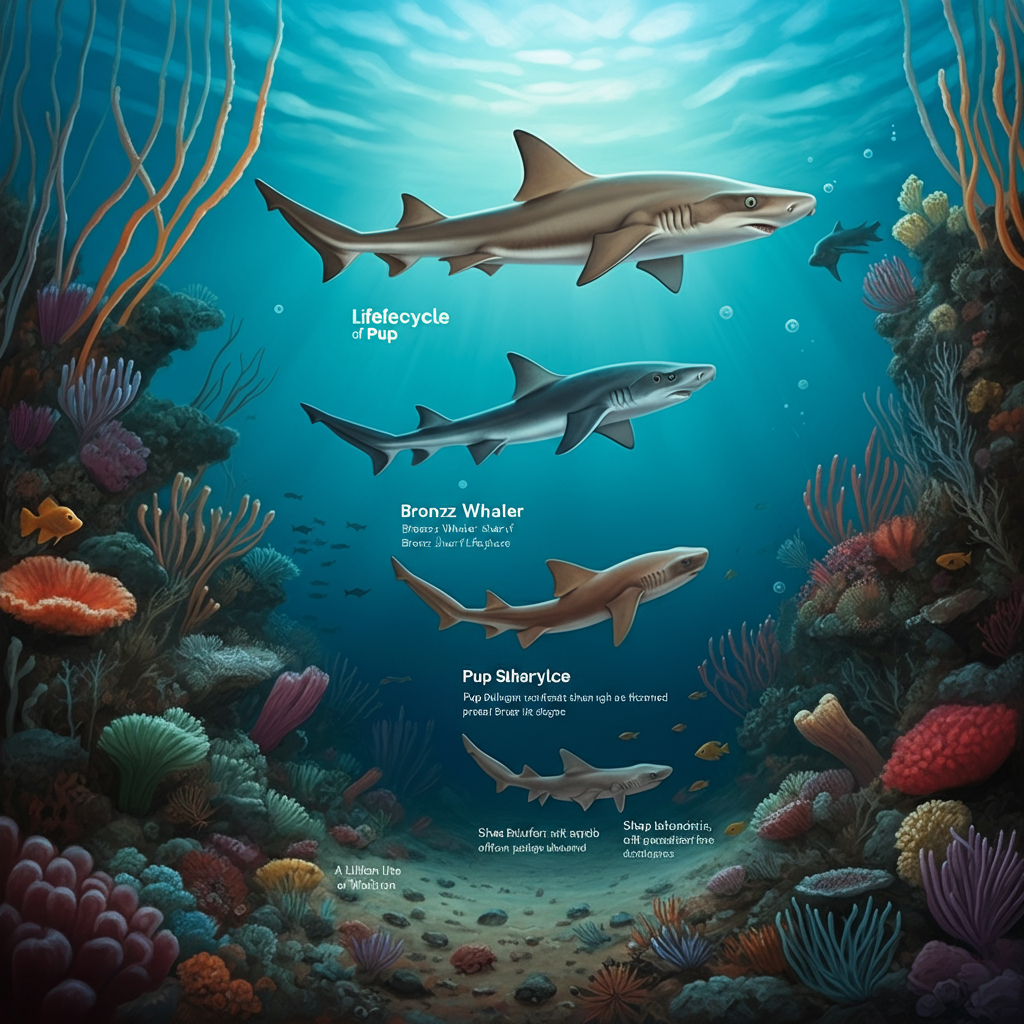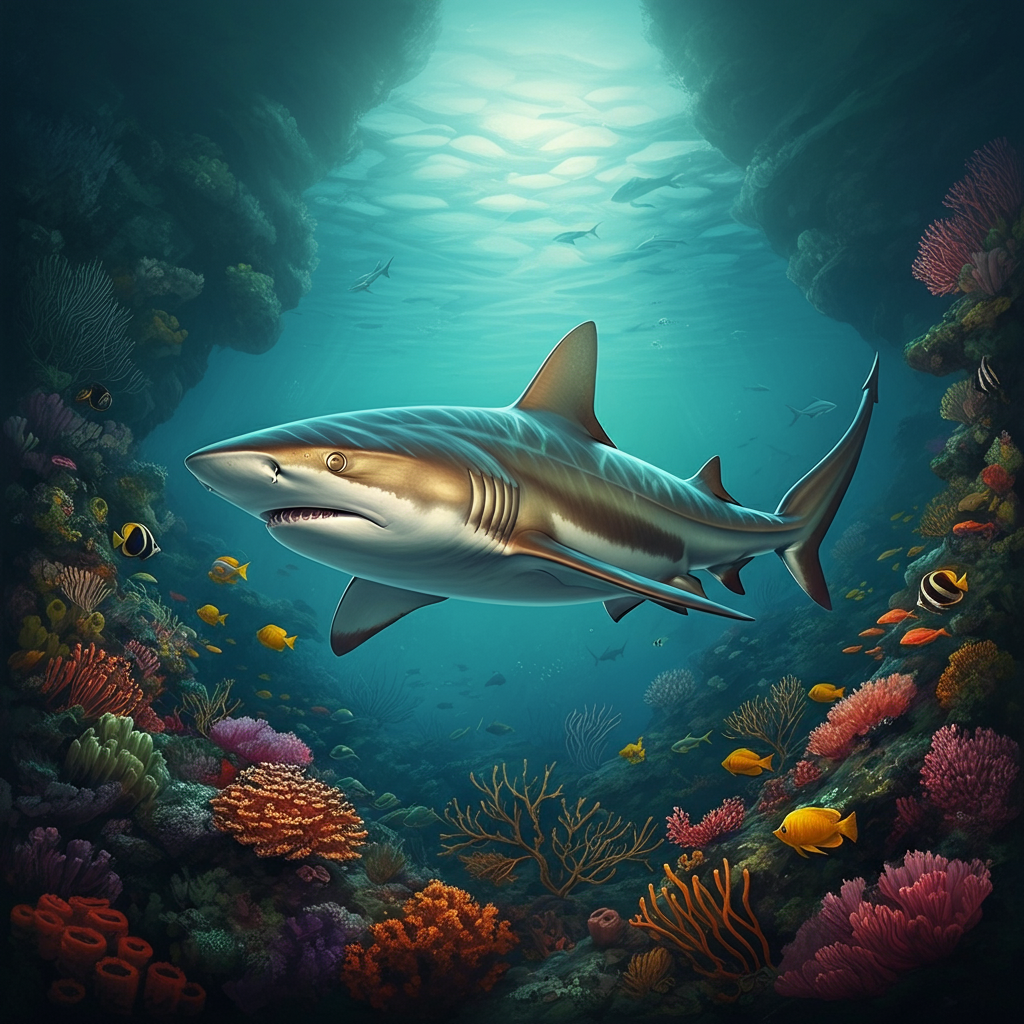Bronze Whaler sharks, or Carcharhinus brachyurus, are fascinating marine animals that are critical to maintaining the health of ocean ecosystems. With their elegant, bronze-colored bodies and exceptionally adept hunting style, Bronze Whaler sharks are a fascinating animal for marine researchers and ocean enthusiasts to study. But what happens in their young lives? What do Bronze Whaler pup sharks become, and what do they experience while they grow up to become ocean apex predators?
This article takes you through the life cycle of Bronze Whaler shark pups from the point of fertilization to juvenile and how environment and human use influence their chances of survival in between. Along the way, we’ll discover what conservation measures are in effect to assist in saving these precious sea animals.
What Are Bronze Whaler Sharks and Why Are They Important?
Bronze Whaler shark, also known as Copper Shark due to the copper-colored metallic shade, inhabits tropical and temperate oceans around the world. They are medium to big in size by length, with the adults standing around 10 feet long on average.
Why are they so important? Bronze Whaler sharks play a vital function in the ocean’s ecosystem as mesopredators. They regulate the number of other sea species and keep the ocean food chain balanced. Having a healthy shark population indicates a healthy marine environment and thus a sign that should be heard to preserve it.
The Journey Begins Gestation and Birth of Bronze Whaler Pups
Reproduction in the Bronze Whaler shark is viviparous and the pups are developed within the mother and are given birth to alive. The gestation period takes approximately 12 months before giving birth to 7 to 24 pups at a time. The sharks will normally breed in waters near the coastline, where the pregnant females are sheltered and relatively safer to give birth in.
Bronze Whaler pups are born fully formed, about 24 to 30 inches in length. Compared to most animals that depend on parental care, newborn Bronze Whaler puppies are independent, well-adapted to feed themselves and provide for themselves.
Stages of Bronze Whaler pup development in early life
Feeding
Bronze Whaler pups thrive at birth naturally. They feed primarily on the smaller sardine, herring, and anchovy fish species. With a highly sensitive sense of smell and electroreception, an evolutionary adaptation, they catch and bring in prey even in contaminated waters.
Growth
Bronze Whaler pups go through a stage of accelerated growth in the first few years of life, increasing close to half in the course of the first two or three years. This is an important stage of development since it allows them to acquire from helpless juveniles to successful predators in their domain.
Learning to Hunt
There is no formal “training” of a sort, however, but the puppies learn their hunting strategy through trial and error. Successful predation on prey and evasion of predators acutely sharpen their skill, finally setting them ready for adulthood.
Habitat and Environmental Factors Affecting Survival
Bronze Whaler pups live in shallow coastal nurseries in their early stages of life. The nurseries are safe water bodies with high food availability and low exposure to large predators. The destiny of these pups is, nonetheless, very vulnerable to some environmental factors:
Water Temperature: Ideal temperatures ensure normal development, but abrupt changes stress the pups and reduce their survival rates.
Food Availability: Regular availability of prey ensures regular growth and energy to the pups throughout development.
Human Activity: Coastal development, fisheries overfishing, and pollution threaten Bronze Whaler nurseries, significantly lowering the rate of pup survival.
FAQs About Bronze Whaler Sharks
1. For how long do Bronze Whaler sharks live?
Bronze Whaler sharks live for 25 to 30 years in the wild, depending on environmental stress and predation.
2. Are Bronze Whaler sharks dangerous to humans?
Bronze Whalers are not aggressive unless provoked. Only a few instances of human encounters have been documented.
3. Are Bronze Whaler sharks ubiquitous?
Yes, their distribution includes temperate and tropical oceans, with their densities off the Australian coast, New Zealand, South Africa, and South America.
4. Are Bronze Whalers migratory?
Yes, seasonal migration, usually to warmer waters during winter.
5. What are the characteristics of a Bronze Whaler shark?
They possess a metallic-bronze appearance, narrow body, and extended pectoral fins. They tend to be mistaken with Bull Sharks but inhabit other habitats and physical characteristics.
Conservation of Bronze Whaler Sharks
Bronze Whaler sharks are affected by an array of threats from incidental catch in commercial fisheries to extraction of their coastal nurseries. They need conservation to ensure their viability in the ocean ecosystem. Some of the steps taken to preserve them include:
Marine Protected Areas (MPAs)
Conservation through the creation of MPAs prevents the elimination of fundamental breeding and nursery sites, which allows the populations to thrive.
Regulated Fishing Practices
Quotas of fish being enforced and reduction of bycatch incidents are inherent practices of sustaining sustainable levels.
Public Awareness Campaigns
Creating awareness among the people regarding the ecological role of Bronze Whalers encourages more appreciation and support for their conservation.
Research and Monitoring
Sharks’ population, movement, and breeding habits are continuously monitored by research, helping in evidence-based conservation.
What is there to do? Help organizations that are taking some action to protect marine habitats and allow fishing to continue in a sustainable way. Little things, such as reducing plastic use and protecting wildlife around the sea with respect, matter too.
Working Together for Shark Conservation
Bronze Whaler shark babies carry the future of their species in their fins. From their odd gestation, through their early years of hunting and growth, Bronze Whaler sharks survive against incredible odds to become adults. By observing their life cycle, discovering the threats they face, and helping to preserve their environment, we can ensure a balanced ocean ecosystem for centuries to come.
Want to learn more about such incredible creatures and other ocean wildlife? Bookmark this site for more articles on sea conservation and wildlife science.


